
REVIEW – I recently purchased an iPhone 16 Pro Max, and the first thing that I always buy for a new phone is a new case. I typically go with simple cases, those that cover the back and sides, and I usually buy whatever is cheap on Amazon. Since this particular Apple offering is egregiously expensive, I’m looking to step up my game and get a case that offers more protection. What better company to turn to than Otterbox, whose reputation for rugged and durable cases is well known! I’m testing out their newest offering in the Defender Series, the Pro XT for MagSafe for the iPhone 16 Pro Max.
What is it?
The Otterbox Defender Series Pro XT is a heavy-duty phone case. It has a dual layer design for extra protection, a rubbery grip to prevent slipping, and a cover to protect the USB-C port from dust and dirt. The case comes with built-in magnets and is compatible with the MagSafe wireless charging standard. Otterbox’s motto is, “Fortune favors the bold. The bold favor OtterBox.”
What’s included?
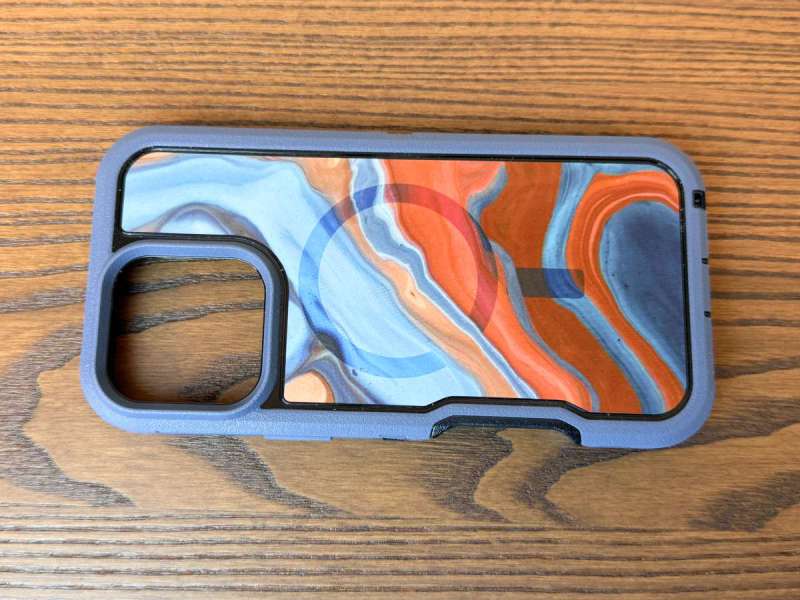
- One case
- One instruction card
The instruction card has a QR code to get a free holster for the case. I tried to redeem this, but they were out of stock. I left my email, but they never notified me that it was available.
Otterbox also generously included a Premium Pro Glass Blue Light Guard that protects the iPhone’s screen, but as I don’t like anything between my finger and the glass, I chose not to install it. If I really need to protect the screen, then I would prefer to get a wallet case.
Tech Specs
This case has the following specifications:
- Materials: Polycarbonate Layer and Thermoplastic Elastomer
- Dimensions: 6.85 in x 3.56 in x 0.60 in
- Weight: 54.33 grams
- Color: 7 different color schemes
- Charging: MagSafe-compatible
This case comes with 7 different colors; the one I got is called “high desert marble (blue).”
Design and features
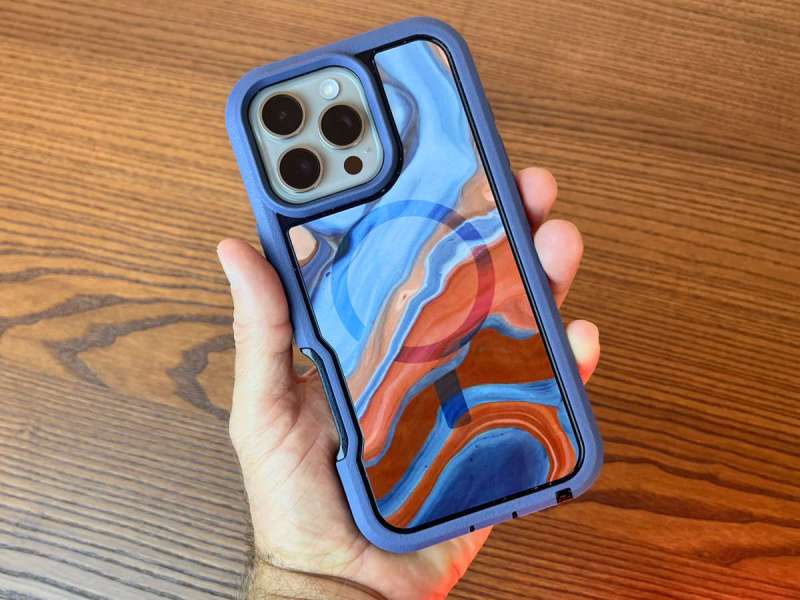
As I hold my Otterbox-encased phone in hand, I experience two impressions. One, this is a large case. It extends the thickness of my phone in all directions, turning an Apple-thin device into something more pedestrian. Two, my phone is well-protected. It’s grippy in my hand, unlikely to slip out, and if it does fall, there’s a good chance the case will absorb the shock.
It’s a design that caters to those looking for function over form, for protection over appearance.
Assembly, installation, and setup
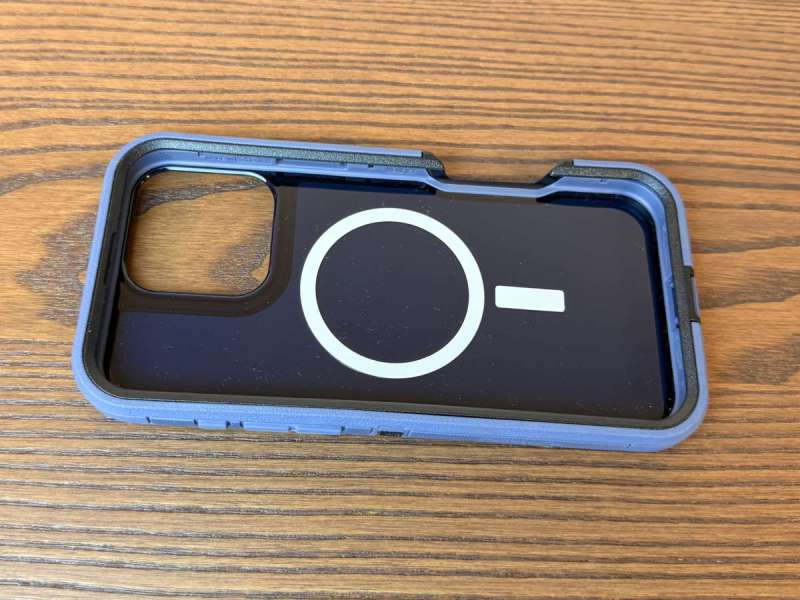
Once I removed all the packaging, I found the case was in its final installation form, as it were. Though it may not look like it, the Defender case comes in two pieces. Otterbox calls the outer blue piece the back and the inner black piece the lid.
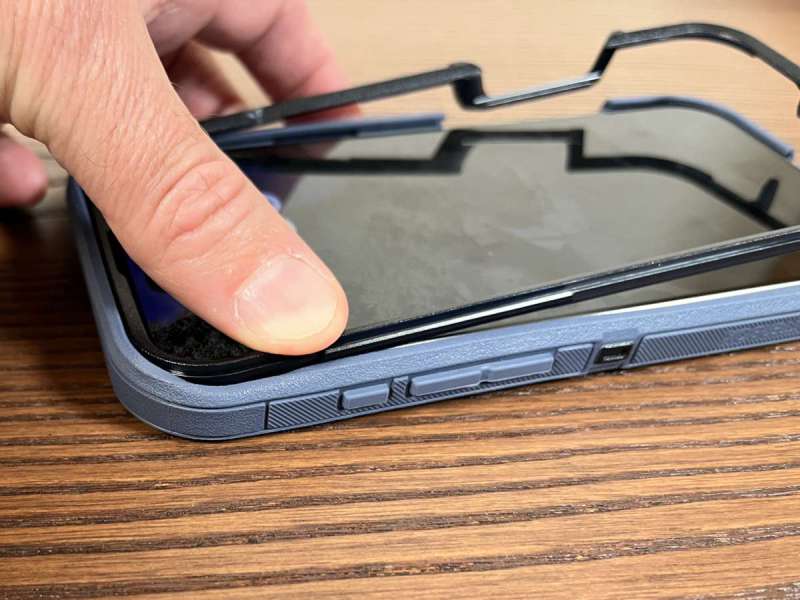
To install the phone, I first remove the lid from the back. I place the phone it inside the back and then then tuck the lid back into it, pressing it into place. This was easy enough to do when putting the phone in, though harder to do when removing it. You can probably tell from some of the pictures that I snapped one side of the lid while removing it and had to superglue it back together.
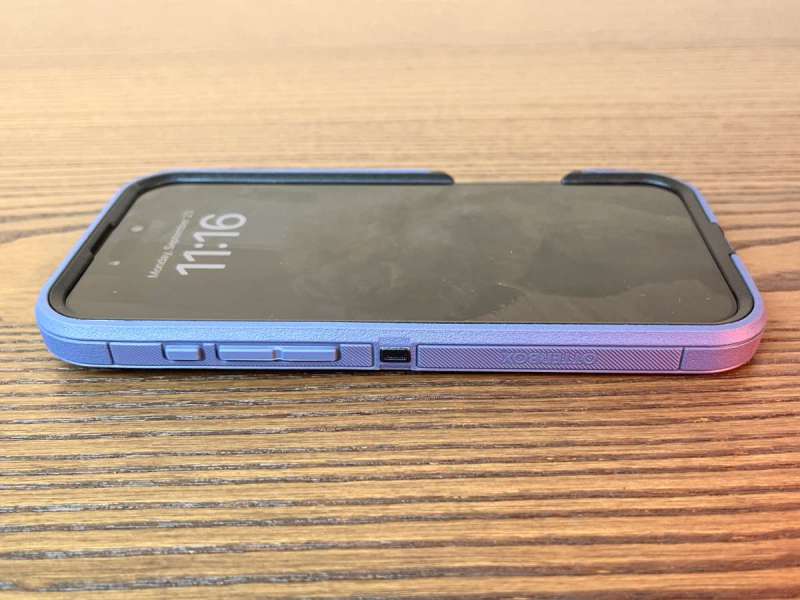
Once locked, this lid-back combo securely holds my iPhone in place; it’s not popping out. The left side of the case has the volume buttons and the new action button.
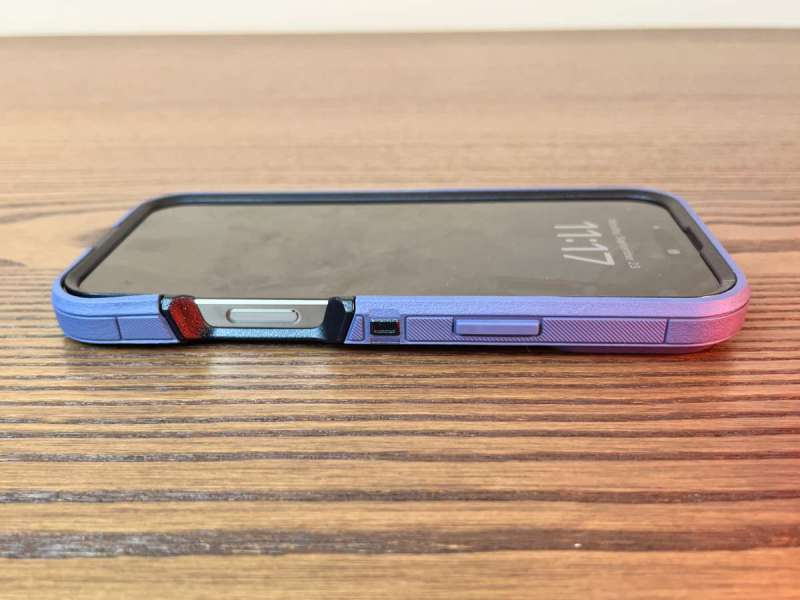
The right side has the power button and a generous cutout for the new camera control, which I approve of. As this control is both a button and a slider, it takes a bit of space to use it correctly.
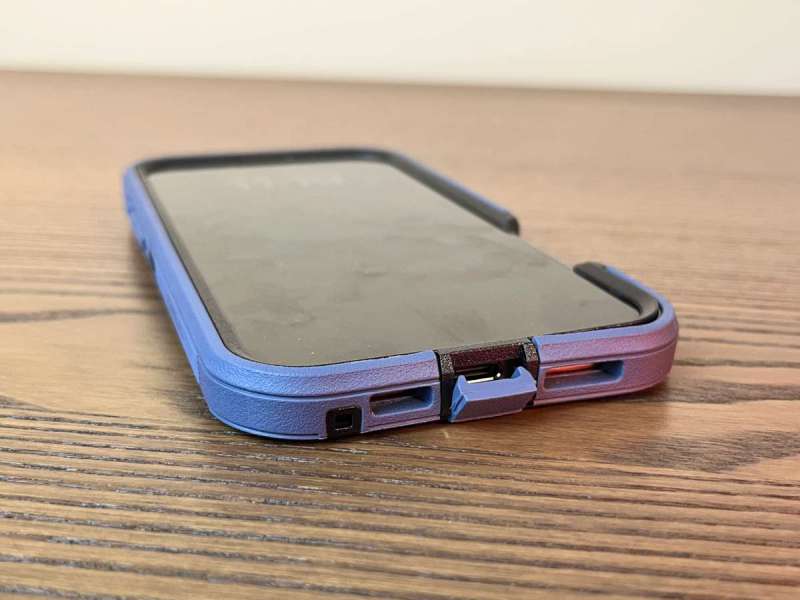
The bottom has holes for the speaker and a cover for the USB-C port to keep out dirt and dust. While this cover is an effective safeguard, it’s also a bit of a pain to pull out for use. At some point, I’m going to put a wireless charger beside my bed so I can charge it at night without connecting a cable.
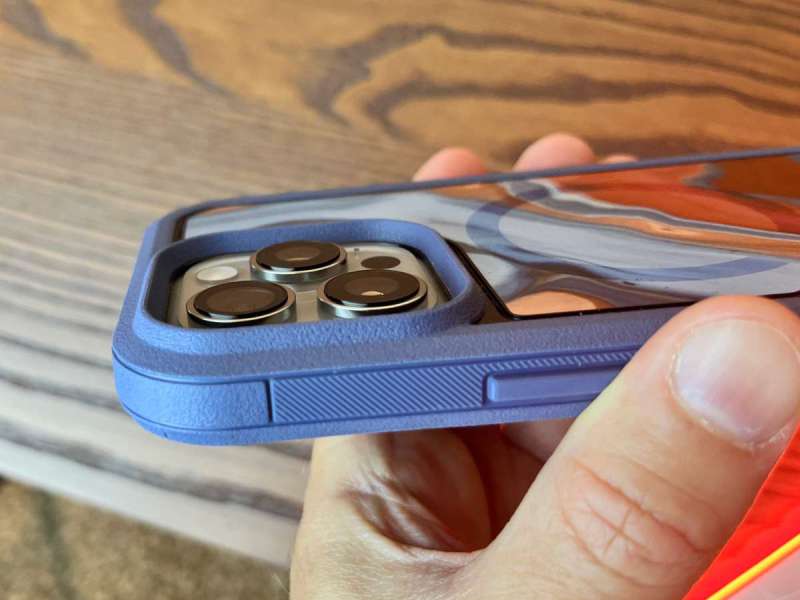
The back has a generous lip around the edge and an even taller lip around the cameras. If I set this phone on its back, the camera is not going to get scratched on the surface.
Otterbox makes this assertion about this case: “DROP+ | 7X as many drops as military standard (MIL-STD-810G 516.6).” The language here is less than clear, but I think it means that they have tested the case in accordance a military standard known as MIL-STD-810G. In particular, they followed the requirements in section 516.6, which defines how to test a phone case by dropping it. The general idea is drop it from a height of four feet onto a piece of two-inch thick plywood sitting on concrete. This test should be done at least 26 times onto each side and edge. I believe that Otterbox claims they drop theirs 182 times, seven times more than the standard requires; with these tests, they are saying that the iPhone is protected from dents, scratches, and cracks. Of course, the devil is in the details. If I were to drop my phone directly onto concrete instead of the much softer plywood or onto an uneven surface, like gravel, the results might be very different. Even so, it’s a useful metric for providing some assurance that my iPhone can survive a fall in this case, and that’s what I want to know.
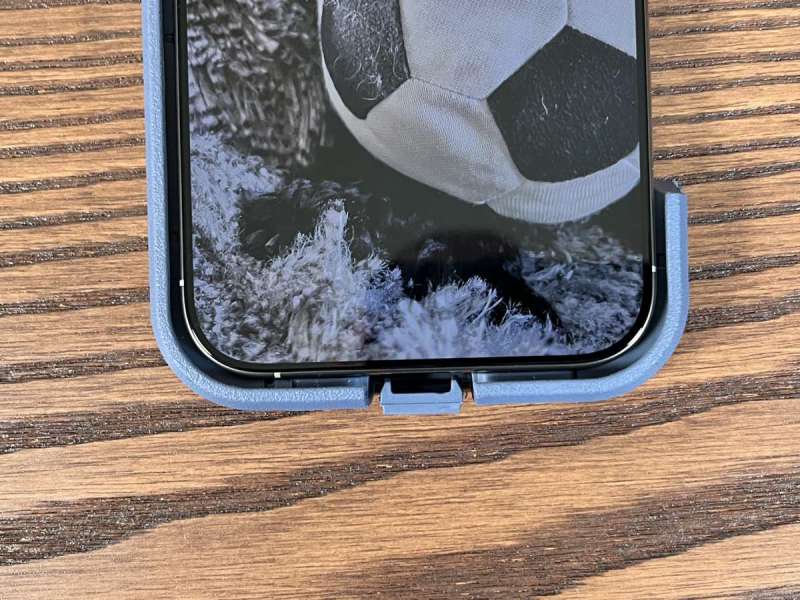
What makes this OtterBox case so reliable? Part of the reason is its dual layer design that I described above. If I look straight down when the phone is in the back but with the lid removed (as in the picture above), I can see an air gap; that is, the side of my phone is not pressed against the inside of the case. That gives it a cushion when I drop it. Another part of the reason is the material used in the back, thermoplastic elastomer. This material has properties of both plastic and rubber; it’s soft, has high elasticity, and can dampen vibrations.
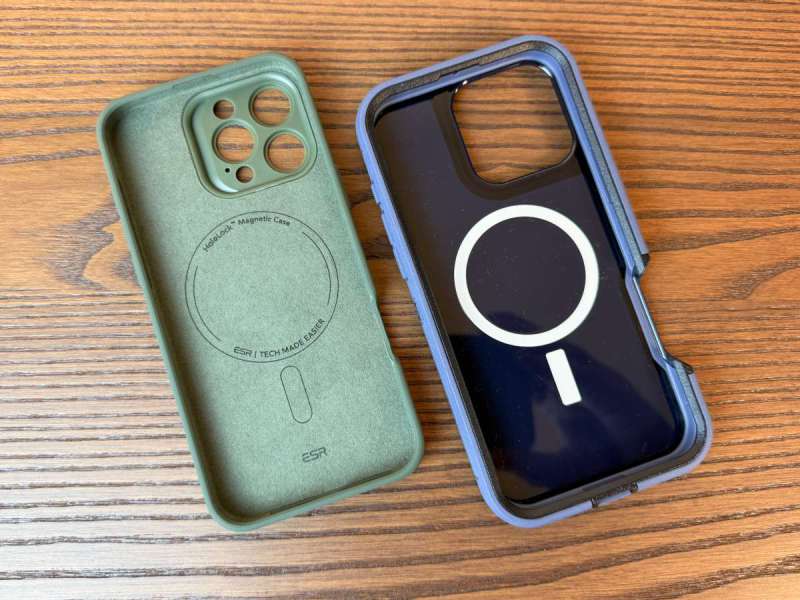
The difference can really be seen when comparing this Defender case to a popular case on Amazon. This green one by ESR had sold over 100k units and was priced at less than $15. It’s obvious that the walls are much thinner, there’s no air gap, and the lips are not as tall. The ESR case will protect my phone fine so long as it’s sitting at home on my desk. If, however, I’m taking my phone out to the job site or to hiking trails in the mountains, or if I’m a bit clumsy or often distracted and tend to drop my phone a lot, I need a case that offers a higher level of protection.
Of course, all this protection comes at a cost: size. The iPhone 16 Pro Max is already monstrously big at 6.42 x 3.06 inches — Steve Jobs must be rolling in his grave — and this case only makes it larger. But if you need the protection, it’s a cost worth paying.
The Defender is MagSafe compatible, so I tested it with a MagSafe powerbank from Anker. It charged my phone through the case without any problems.
What I like about the Otterbox Defender Series Pro XT iPhone case
- Great protection
- Easy to grip and hold
What needs to be improved
- Nothing
Final thoughts

The Pro XT for MagSafe is the latest offering from Otterbox in their Defender Series. This is a phone case that offers significantly improved protection for my iPhone 16 Pro Max. The tradeoff is increased size, as it makes my phone wider and taller, almost un-Apple-like. Having used this case on my phone for the last few weeks, this is a tradeoff that I am happy with. Though I don’t work in a rugged environment, I appreciate the security that this case provides for my overly expensive iPhone. If you’re looking to protect your investment, I highly recommend that you purchase one of these cases.
Price: $69.95
Where to buy: Otterbox and Amazon
Source: The sample for this review was provided free of charge by Otterbox. Otterbox did not have a final say on the review and did not preview the review before it was published.

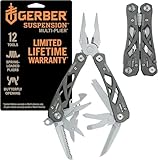

Gadgeteer Comment Policy - Please read before commenting
The one vulnerability is the cut out for the camera button does not protect the front side glass screen. I invested in a high quality screen protector which saved my glass from cracking within 30 days of ownership. The screen protector cracked diagonally all the way across the front face. The glass was spared.